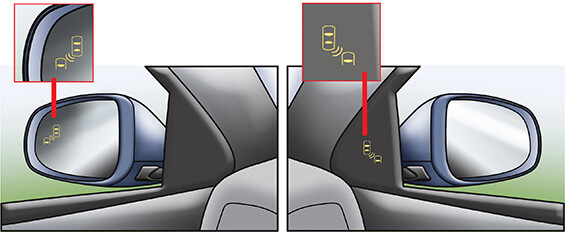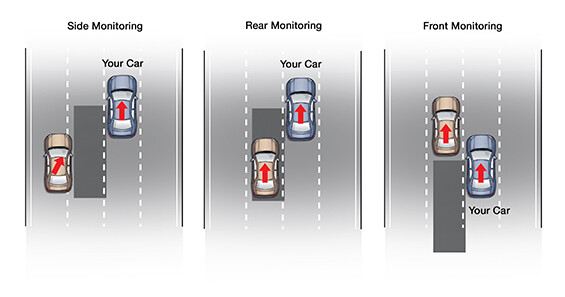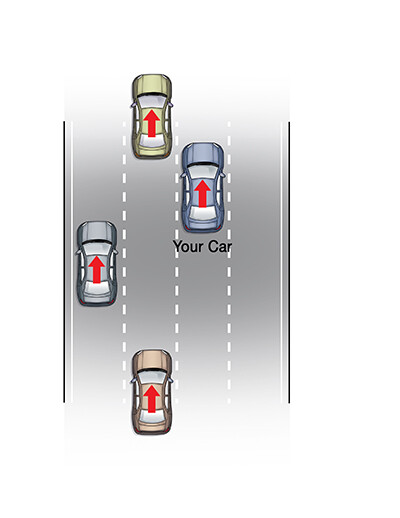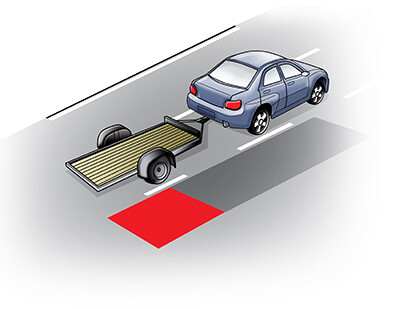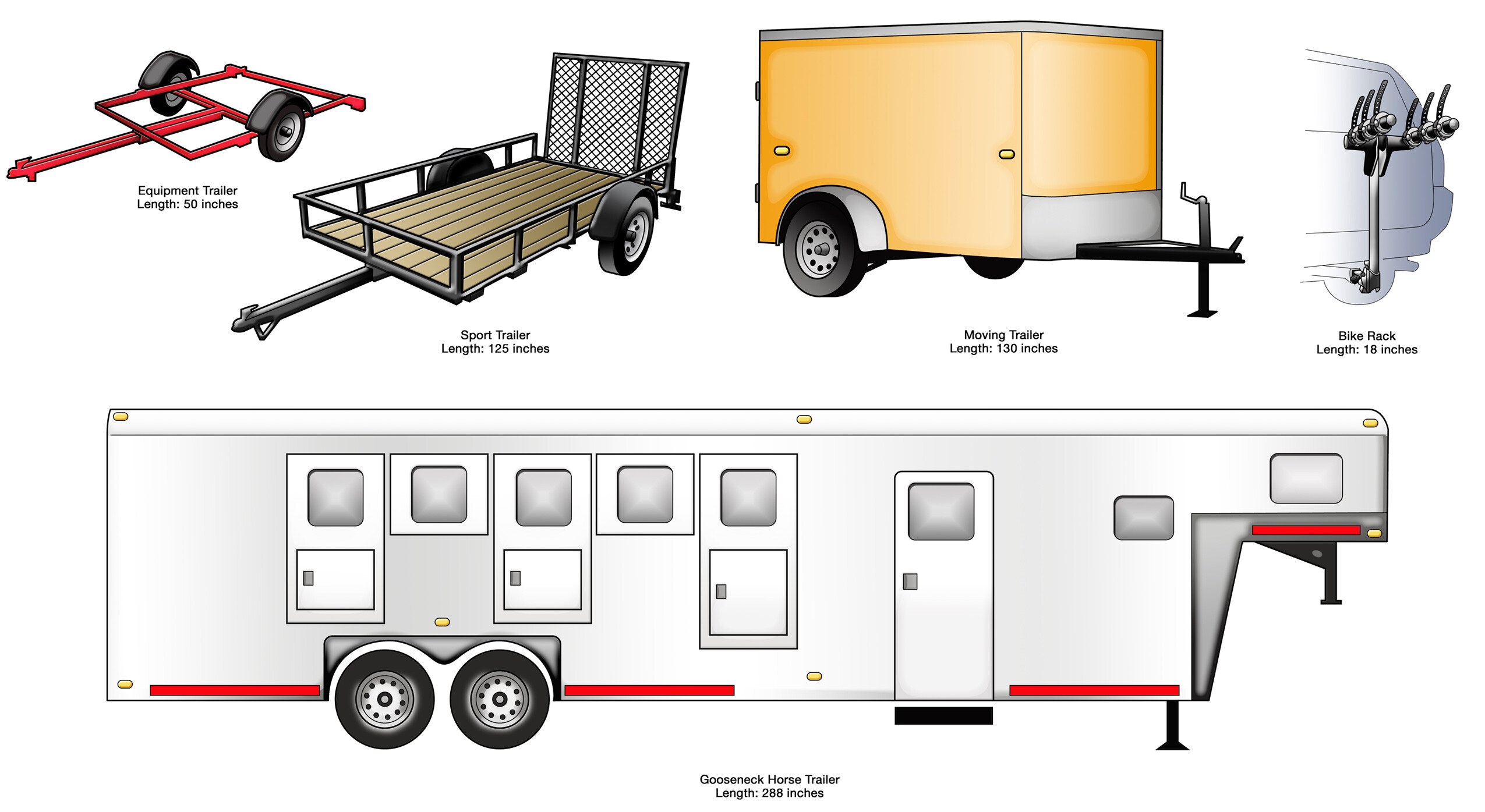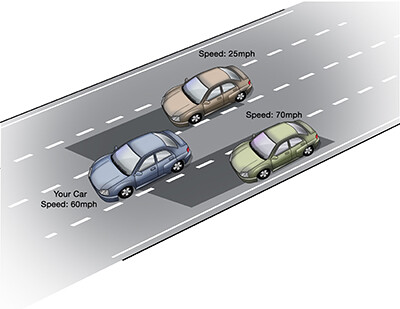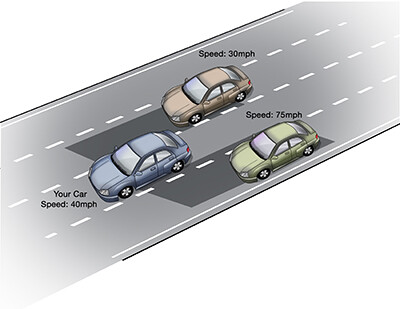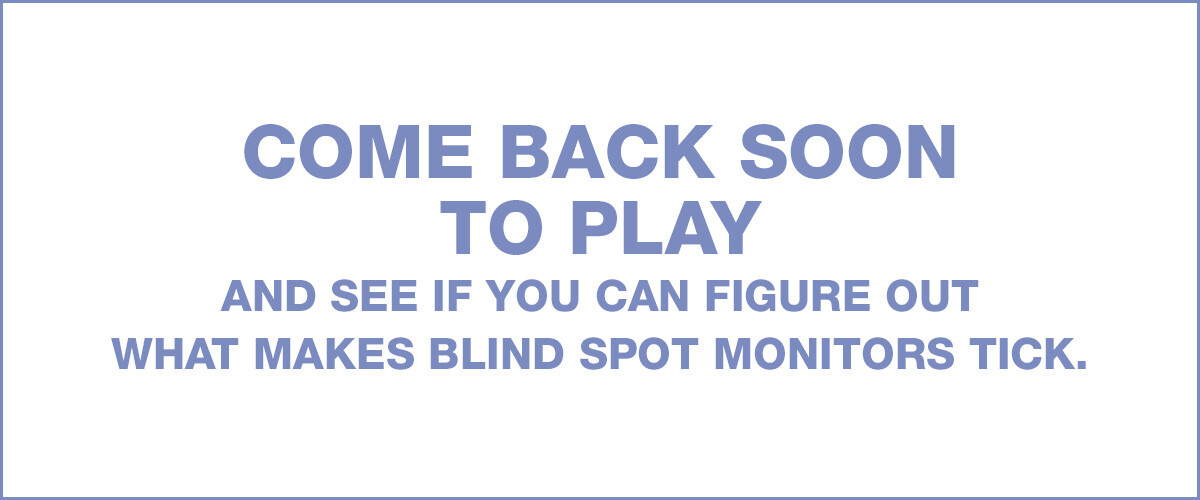The detection area of your Blind Spot Warning is based on the lane width of typical highways. Therefore, when you drive on a road with unusual lane width, your BSW may not work properly.
Close Menu
Safety Features
- High Speed Alert
- Adaptive Cruise Control - Quick Guide
- MyCarDoesWhat Animated Logo - Video File
- My Car Does What: Clearing the Confusion
- Non-Occupant Protection
- Your Vehicle in the Mobility System
- Welcome to MyCarDoesWhat.org
- Temperature Warning - With Rick & Scout
- Hill Descent Assist - With Rick & Scout
- Pedestrian & Bicycle Detection - With Rick & Scout
- Forward Collision Warning – With Rick & Scout
- Hill Start Assist - With Rick & Scout
- Drowsiness Alert - Quick Guide
- Adaptive Headlights - Quick Guide
- Parking Sensors - Quick Guide
- Automatic Parallel Parking - Quick Guide
- MyCarDoesWhat PSA (Full)
- Electronic Stability Control (ESC) - Quick Guide
- MyCarDoesWhat PSA (:30)
- MyCarDoesWhat PSA (:15)
- Promo - Adaptive Headlights
- Drowsiness Alert - With Rick and Scout
- Rick & Scout Introduce MyCarDoesWhat.org (TRT 1:22)
- Techspert Morgan Price: Brake Assist
- Private video
- Adaptive Headlights - With Rick and Scout
- Private video
- Promo – Rick & Scout Tease Adaptive Headlights (TRT :24 )
- Automatic Emergency Braking (AEB) - Quick Guide Animation
- Private video
- Electronic Stability Control (ESC) (remove) - With Rick & Scout
- Traction Control - With Rick & Scout
- Push Button Start - Quick Guide
- Parking Assist and More - With Rick and Scout
- 3 Sound Bites – Debbie Hersman, President & CEO, National Safety Council TRT: 1:00 (:15/:12/:14)
- Private video
- Lane Keeping Assist - Quick Guide
- Press Conference
- Private video
- 3 Sound Bites – Daniel McGehee, University of Iowa TRT: 1:19 (:20/:24/:16)
- MyCarDoesWhat Launch Event Live Stream - Oct 7, 2015
- Private video
- Lane Departure Warning - Quick Guide
- Private video
- B-Roll – Safety Features, Driving and Screen Shots (TRT: 8:17)
- Forward Collision Warning - Quick Guide
- Blind Spot Monitor - Quick Guide
- Rear Cross Traffic Alert - Quick Guide
- Back-up Camera – Quick Guide
- Anti-lock Braking System – Quick Guide
- Electronic Stability Control (ESC) - With Rick & Scout
- Traction Control - Quick Guide
- Back-up Warning - Quick Guide
- Sideview Camera - Quick Guide
- Automatic Emergency Braking - Rick & Scout
- Tire Pressure Monitoring System - Quick Guide
- Meet Rick & Scout
- Tire Pressure Monitoring System - With Rick & Scout
- Lane Departure Warning and More - With Rick & Scout
- Forward Collision Warning and More – With Rick & Scout
- Blind Spot Warning Systems - New Car Features with Rick & Scout
- Push Button Start – With Rick & Scout
- Back-up Camera and More - With Rick & Scout
- Adaptive Cruise Control - With Rick & Scout
- Anti-Lock Braking System - With Rick & Scout
- Combined Sound Bites & B-Roll (TRT: 10:12)
- MyCarDoesWhat Sizzle Reel_October 7 2015
- Road to Automation - Motion Graphic with music
- Back-up Camera
- Anti-Lock Braking System
- Blind Spot Warning
- Automatic Emergency Braking
- Lane Departure Warning
- Tire Pressure Monitoring System
- Adaptive Cruise Control
- Adaptive Headlights
- Automatic Parallel Parking
- Automatic Reverse Braking
- Back-up Warning
- Bicycle Detection
- Brake Assist
- Curve Speed Warning
- Drowsiness Alert
- Electronic Stability Control
- Forward Collision Warning
- High Speed Alert
- Hill Descent Assist
- Hill Start Assist
- Lane Keeping Assist
- Left Turn Crash Avoidance
- Obstacle Detection
- Parking Sensors
- Pedestrian Detection
- Push Button Start
- Rear Cross Traffic Alert
- Temperature Warning
- Sideview Camera
- Traction Control

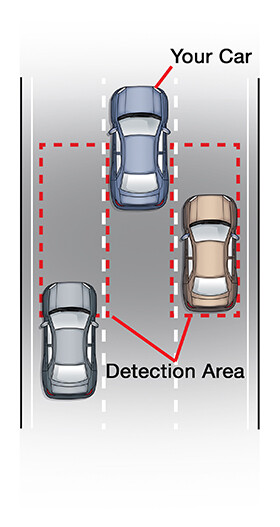 Blind Spot Warning (BSW) helps you detect cars in hard-to-see areas, commonly known as “blind spots.” BSW may also be called Blind Spot Information Systems, or Blind Spot Detection. BSW systems monitor the blind spots on both sides of your car. When a car is detected, a yellow or red indicator will light up in the side mirror or on the window frame. Some systems also provide a warning sound. BSW helps you to avoid crashes that occur in blind spot areas. They are most effective when your car is passing, being passed, or preparing to make a lane change.
Blind Spot Warning (BSW) helps you detect cars in hard-to-see areas, commonly known as “blind spots.” BSW may also be called Blind Spot Information Systems, or Blind Spot Detection. BSW systems monitor the blind spots on both sides of your car. When a car is detected, a yellow or red indicator will light up in the side mirror or on the window frame. Some systems also provide a warning sound. BSW helps you to avoid crashes that occur in blind spot areas. They are most effective when your car is passing, being passed, or preparing to make a lane change.